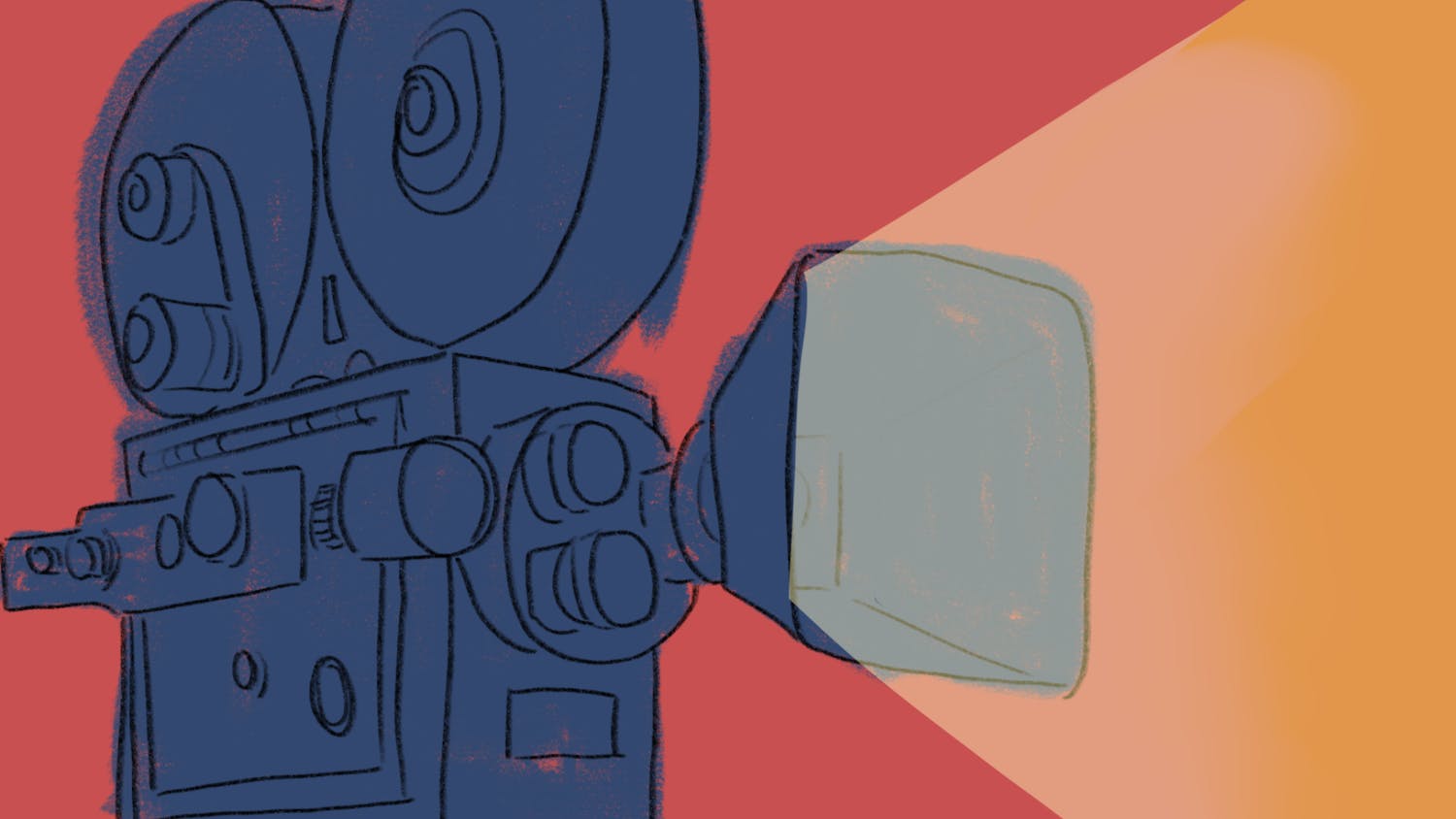After foregoing a second mission in the bat suit, Val Kilmer takes on a lesser-known superhero, Simon Templar, in "The Saint." As a chameleon-like master of disguise, Templar is James Bond with a makeup kit -- a smooth and tenacious master of clandestine operations.
Loosely based on a TV series starring Roger Moore, "The Saint" follows Templar's frenzied adventures as he travels between Russia and England. It focuses primarily on his relationship with Dr. Emma Russell (Elizabeth Shue), a brilliant and beautiful Oxford University scientist who has miraculously discovered how to achieve cold fusion, and his confrontations with a Russian billionaire and autocrat (Rade Serbedzija).
Templar is supposedly a man devoid of any base identity who takes on the guises of any one of a motley crew of characters each named after a Catholic saint.
His wardrobe of disguises and personalities include everything from a large-bodied Russian maid to a black leather-clad South African artist and heartbreaker.
Kilmer rewrote a significant section of the script and added numerous disguises and identities. By expanding this plot device, Kilmer allows himself to do what he does best -- ramble incoherently from idea to idea and persona to persona.
Throughout the film, Kilmer is completely self-engrossed and seems only vaguely aware of the cyclone of special effects and the twists and turns of the ridiculously abstract plot.
Like Kilmer, Phillip Noyce, the director, does not concern himself with creating a coherent narrative or even a sense of time or place. He shapes "The Saint" into an unstable and amorphous jumble of farfetched incidents and glittery images, a surprising shift from his earlier work.
Unlike the manic confusion of "The Saint," Noyce is known for his delicately crafted and deliberate thrillers -- "Dead Calm," "Patriot Games" and "Clear and Present Danger."
With "The Saint," it is clear that Noyce aimed to create a blockbuster for the MTV generation.
It epitomizes the current Hollywood fascination with big budget and frenetic patchworks of recycled ideas and established cliches.
This quintessence of modern cultural iconography is crystallized in the film's cellular and internet technology, the technical rock musical score and Templar's obsession with breaking the $50 million mark in his Swiss Bank account.
The film shamelessly borrows plot and idea from recently released and remarkably similar spy films, "Mission Impossible" and "Goldeneye."
Much like "Goldeneye," "The Saint" is set largely in the all-too-familiar environment of an unstable Russian republic with villainous men in positions of power and numerous confrontations with Russian military and Mafia hoods.
Other parts of the film take place in London (where "Mission Impossible" was set), also borrowing the e-mail and internet gadgetry plot devices directly from that film.
The most prominent travesty of believability in the film is its treatment of science and Shue's remarkably unscientific character. Hardly discernible through a fog of frantic imagery, it becomes clear that at the center of the plot is Dr. Russell's discovery of cold fusion.
Shue comes off as a spacey and whimsical scientist, resembling more closely Shue's puerile acting in "Cocktail" and "Adventures in Baby-Sitting" than some of her more serious films such as "Leaving Los Vegas" or "The Trigger Effect."
We are supposed to believe that not only has this pretty, unscientific woman discovered a formula which eluded Albert Einstein, but that she keeps it concealed on a dozen square cards which are hidden in her bra.
After Templar seduces Russell and steals this formula, she follows him to Russia and confronts him. Instead of being angry, this jilted and supposedly highly intelligent woman has miraculously and suddenly fallen in love with him and proceeds to follow Templar around like a trusting puppy for the rest of the film.
"The Saint" abounds with these irrational occurrences which defy plausibility and understanding -- the random appearance of a beautiful art dealer in the Russian sewer who helps them elude the hit-men pursuing them, a Russian prostitute risking her life in order to hide them in her home and Templar's direction of Dr. Russell, which commands her to finish the formula in a day and fax the results to him.
All together, it is probably one of the most improbable, unrealistic and unbelievable films ever made.
Amazingly though, none of this implausibility ends up mattering and "The Saint" ends up being a guiltily entertaining film.
For a cinematic cesspool, it is strangely enjoyable.
Unlike other weakly scripted action films, "The Saint" is so fast-paced and uncontrolled that we never have time to process the plethora of information that flies at us getting carried along a train of irresistible action sequences and the intensity of powerful techno rock.
It has taken the art of filmmaking one dramatic step away from narrative film towards the making of music video. The musical score is used to string together unrelated and visually satisfying imagery and random yet satisfying plot sequences.



